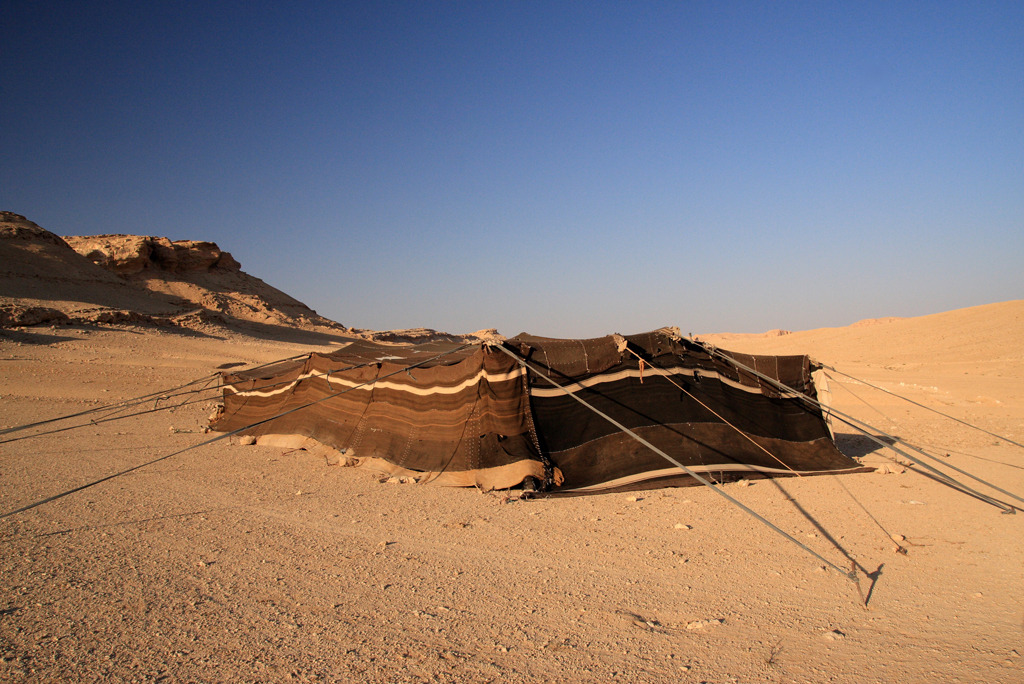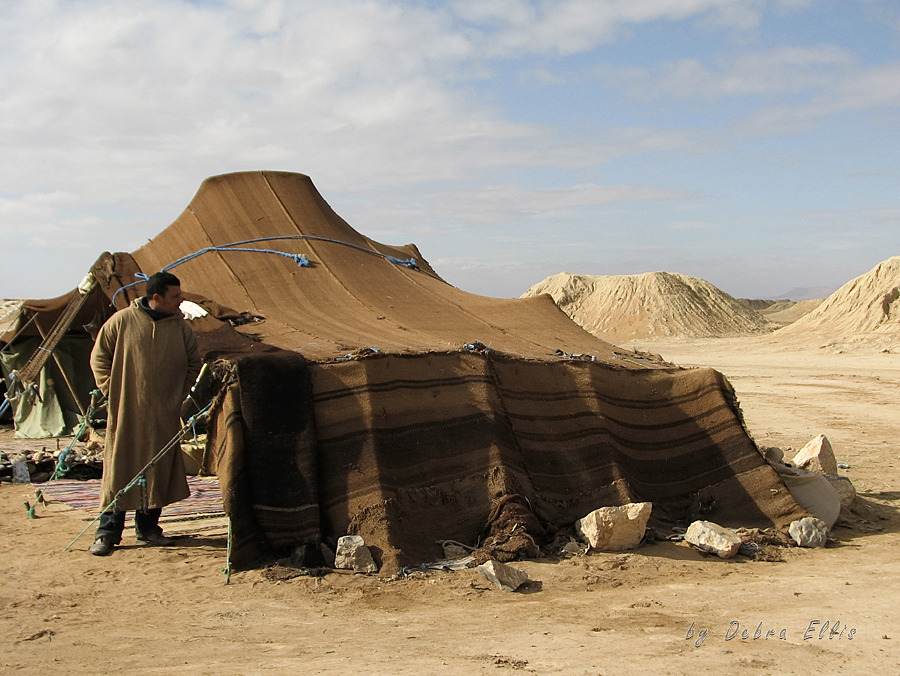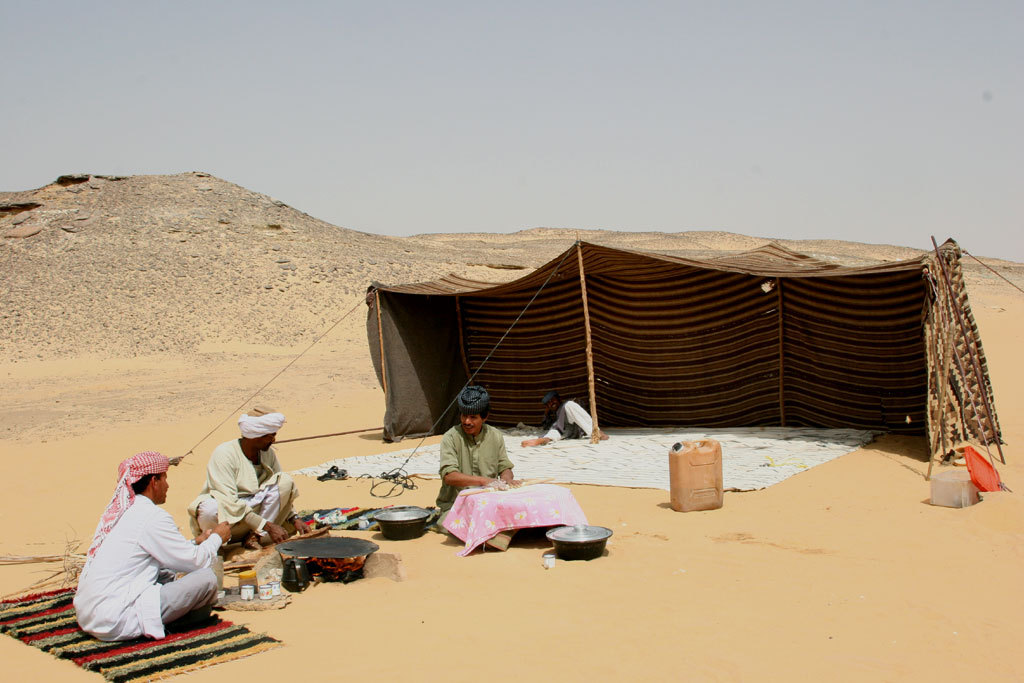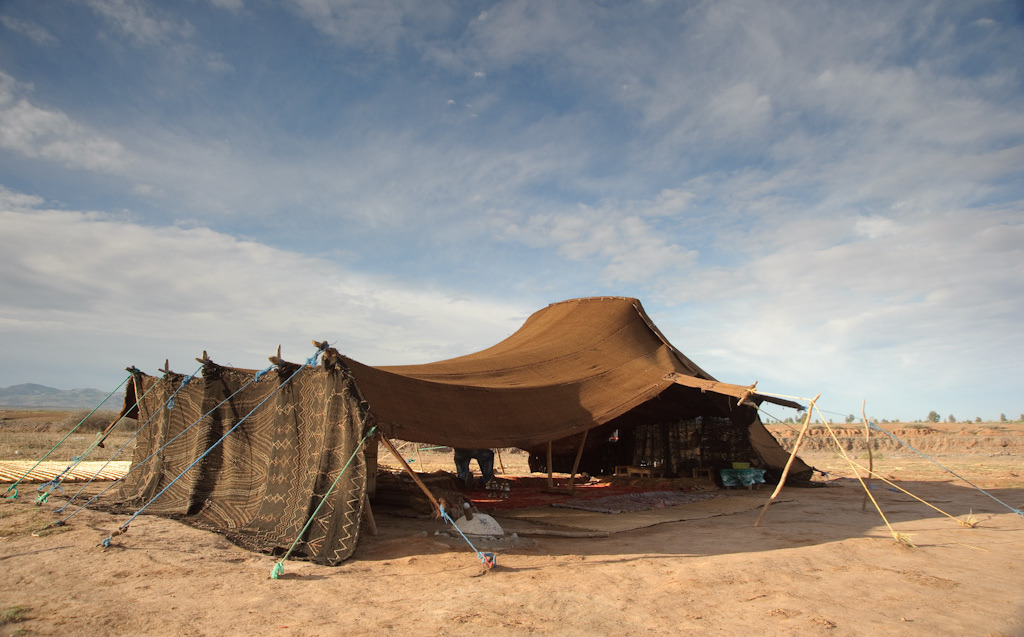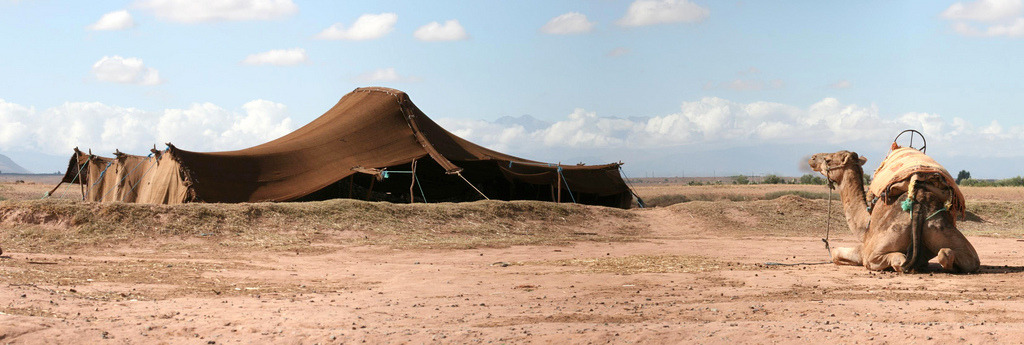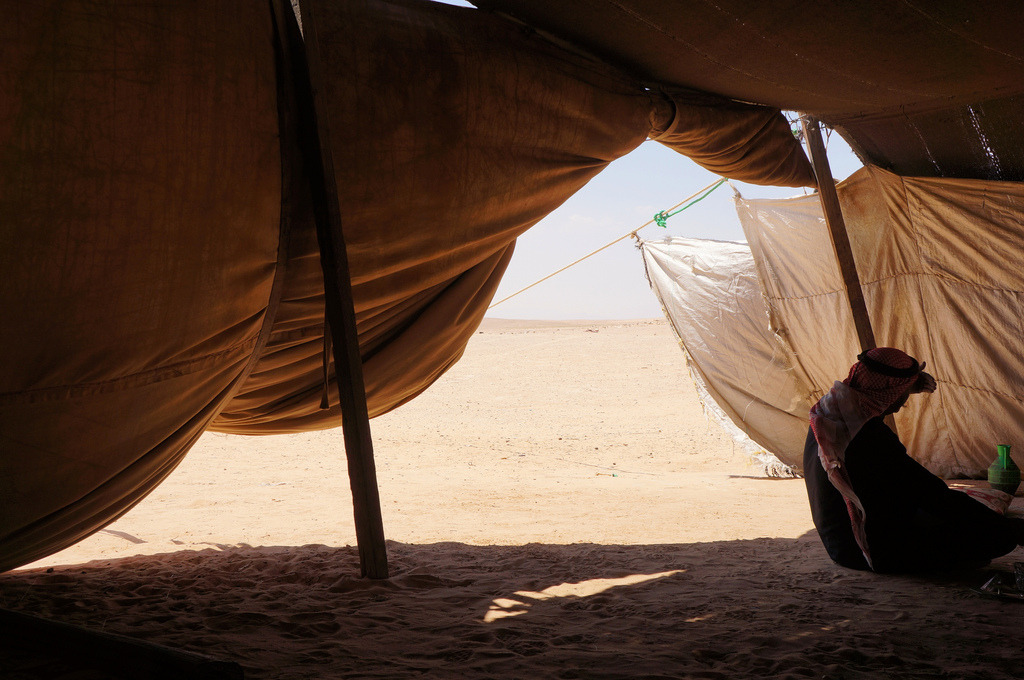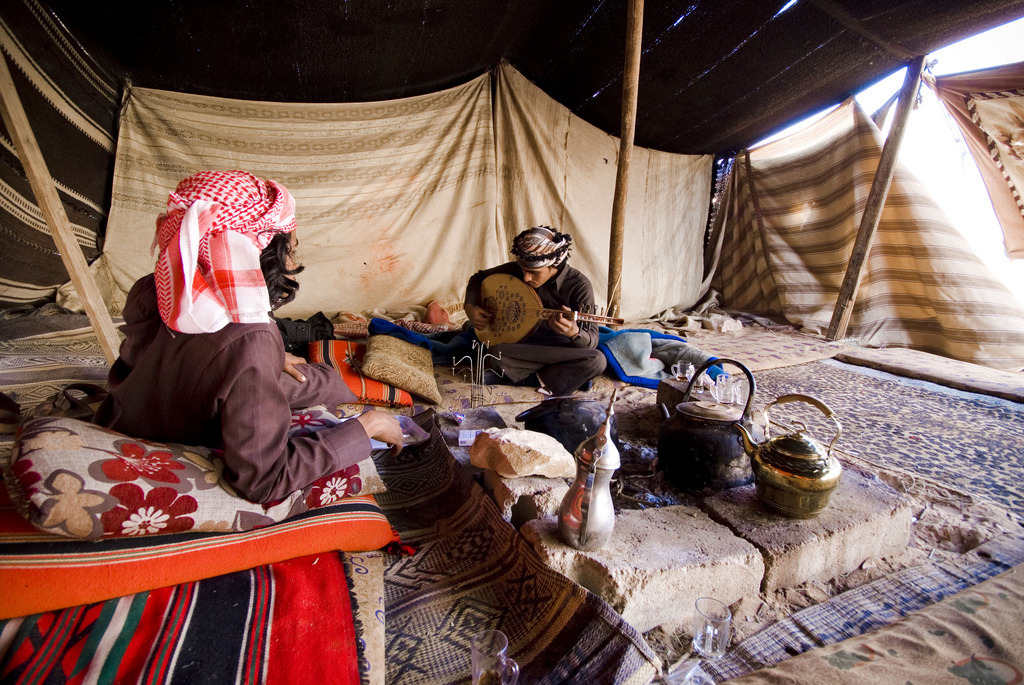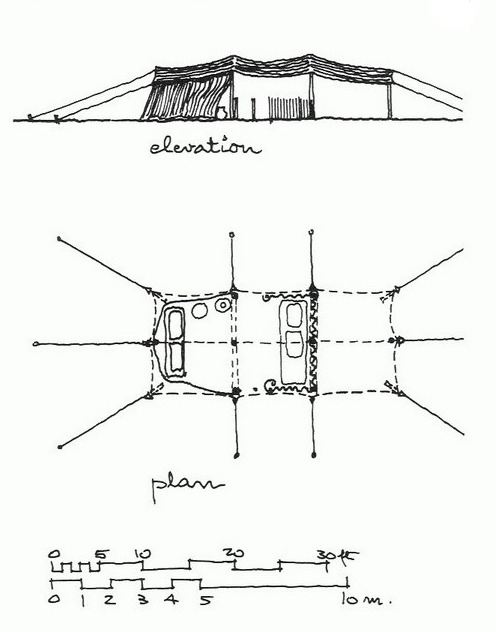V 25 |
Bedouin black tent |
type |
|
place |
|
population |
The most widespread type of dwelling of the Arab world’s semi-nomadic pastoralists is the black tent. The tent’s covering is made of cloth loosely woven from goat hair (or sometimes sheep’s wool or camel hair) which provides shade but allows some light through, lets out hot air and offers protection from sandstorms and swells when wet to become rainproof. Due to its structure the flow of air currents cools the interior and even if it is dark in colour (brown or black) it is 8-10 degrees cooler inside than outside, which counts for a lot in the 40-50 degree heat of the desert.
The sizes of the tents vary greatly, ranging from small tents for a few people up to 30-40 metre long dwellings made up of several tents. On average the tents have a floor area of 15 x 3.5 metres, are 2 metres high and can be erected by five people in half an hour. The frames composed of straps and dozens of poles, which support the huge tent canvases. Making the tent covering is a huge job, involving stitching together goat hair (or camel hair) strips of material into a 60-80 cm wide sheet the length of the tent. Wives are helped with the weaving of tent covers by all their female relatives, as it is a wife’s dowry. Later the strips of the tent can be repaired separately, and typically one strip needs replacing per year.
Larger tents are divided into areas with different functions while the smaller ones are undivided. However, every tent is ‘virtually’ divided into two areas: a public area which is both a communal space and the men’s sleeping area and a women’s sleeping area which is isolated from the outside world. There are tribes who all eat in front of their tents, while the men sleep outdoors.
